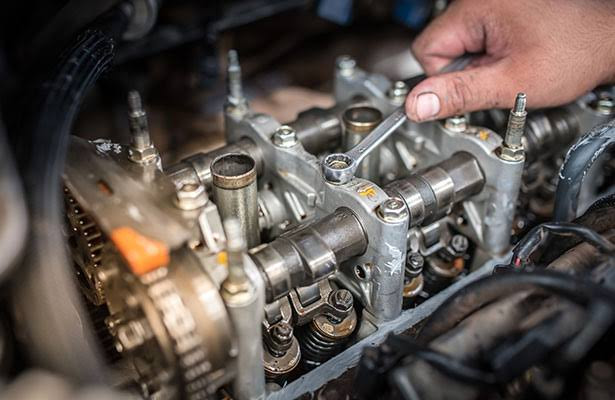Engine valves are parts of your car that control the flow of air and fuel into and out of the cylinders. They need to open and close at the right time and with the right amount of clearance. If they are not properly adjusted, they can cause problems for your engine and affect its performance.
The clearance between the valve and the rocker arm is called the valve lash. It is measured in millimeters or inches and can be adjusted by tightening or loosening the valve adjuster screw. The valve lash should be within the specifications given by the manufacturer of your car. If it is too loose or too tight, it can cause symptoms that you can notice while driving.
Some of the symptoms of an engine with valves that are not properly adjusted are:
- Ticking noises: If the valves are too loose, they will make a ticking or clattering sound when they hit the rocker arms. This noise will be louder when the engine is cold and may go away when it warms up. However, if the noise persists, it means that the valves need to be tightened.
- Power loss: If the valves are too tight, they will not close completely and will leak compression. This will reduce the engine power and make it harder to accelerate. You may also notice poor fuel economy and increased emissions. If the valves are too loose, they will also reduce the engine power, but not as much as if they are too tight. This is because they will not open fully and will restrict the air and fuel flow into the cylinders.
- Engine damage: If the valves are not adjusted for a long time, they can cause serious damage to the engine. If they are too tight, they can overheat and burn, leading to valve failure and cylinder head damage. If they are too loose, they can wear out the valve seats and cause valve recession, which will affect the valve seal and compression.
- Engine misfire: If the valves are not opening and closing at the correct time, it can cause a lack of power and a rough idle. The engine may also stutter or hesitate during acceleration. This can also lead to pre-ignition issues, where the fuel-air mixture ignites before the spark plug fires, causing a knocking sound and damaging the pistons.
- Hard starting: If the valves are too tight, they can prevent the engine from starting easily, especially when it is hot. This is because the valves do not allow enough air and fuel to enter the cylinders, resulting in a weak or no spark. If the valves are too loose, they can also cause hard starting, but for a different reason. This is because the valves do not seal properly, allowing the compression to escape and reducing the engine’s efficiency.
- Stalling: If the valves are out of adjustment, they can cause the engine to stall or die unexpectedly. This can happen when the engine is idling or when it is under load. The reason for this is that the valves interfere with the engine’s timing and combustion, causing a loss of power and stability.
- Overheating: If the valves are too tight, they can cause the engine to overheat, as they do not allow enough heat to escape from the cylinders. This can damage the engine’s components and lead to a breakdown. If the valves are too loose, they can also cause overheating, but for a different reason. This is because the valves create more friction and wear on the valve train, generating more heat and reducing the engine’s lifespan.
- Increased fuel consumption: If the valves are out of adjustment, they can cause the engine to consume more fuel than normal. This is because the valves affect the engine’s efficiency and performance, making it work harder and burn more fuel. This can also increase the engine’s emissions and harm the environment.
To prevent these problems, you should check and adjust your valve lash regularly, according to the maintenance schedule of your car. You can do this yourself if you have the right tools and skills, or you can take your car to a professional mechanic. Adjusting the valve lash is a simple and inexpensive procedure that can improve your engine performance and extend its life.

Comments (0)
Please login to join the discussion
Be the first to comment on this article!
Share your thoughts and start the discussion